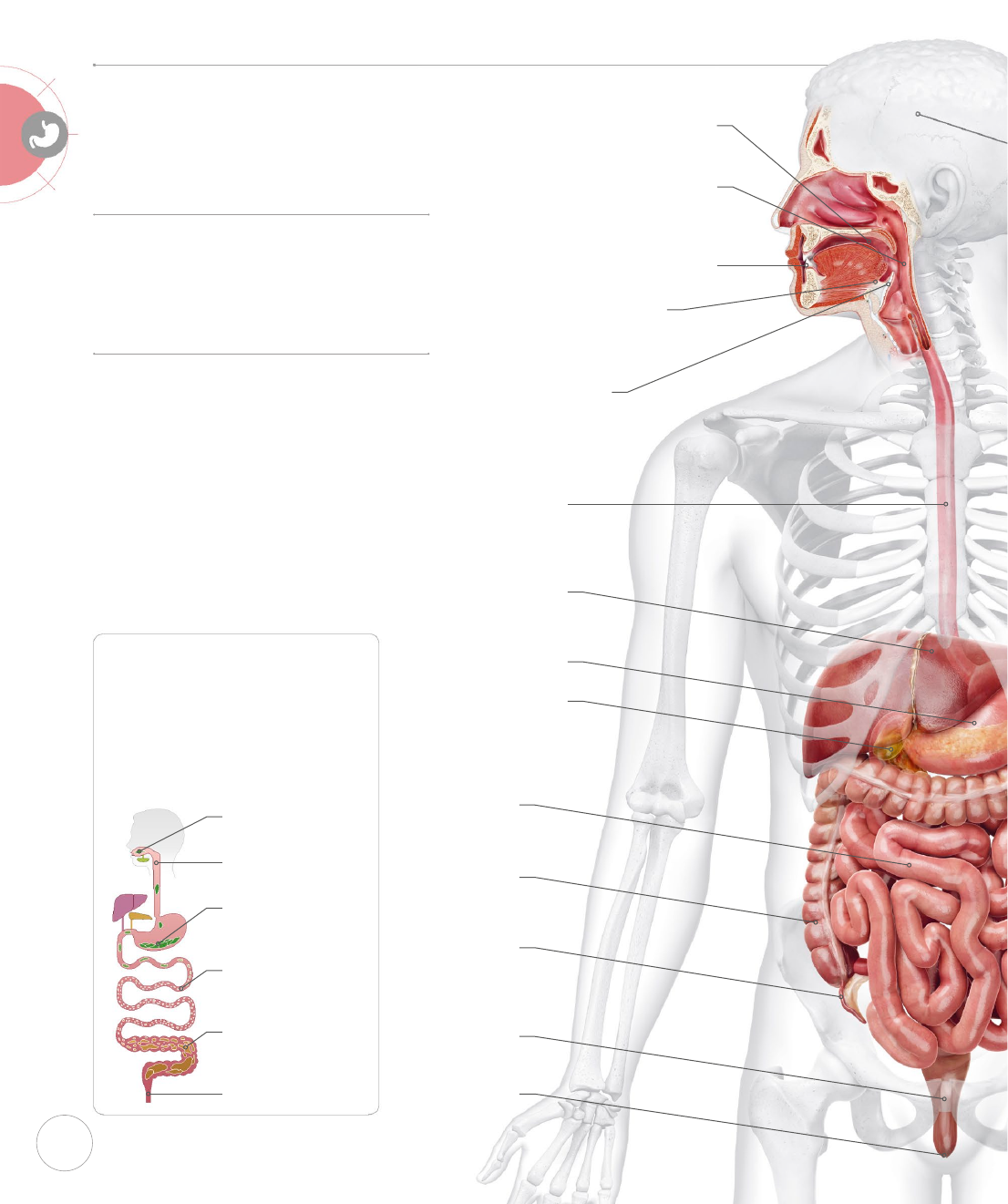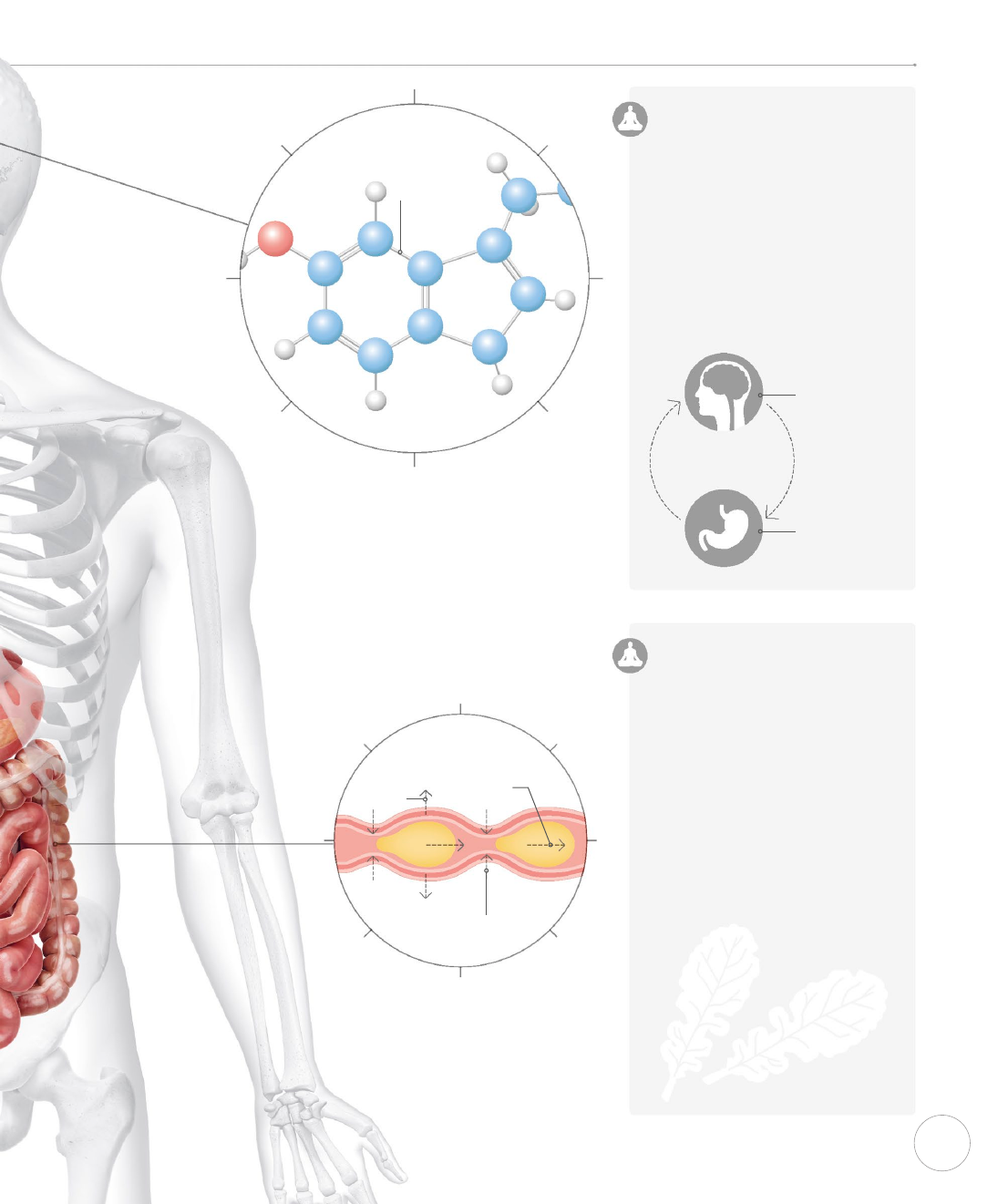
38
HUMAN ANATOMY
The digestive tract is a tube with
selective membranes that control
what gets into your body. Nutrients
are absorbed and waste is expelled.
SYSTEM OVERVIEW
Food is broken down into absorbable units
by your digestive system, from chewing in
the mouth to chemical breakdown in the
stomach and squeezing in the intestines.
Nutrients enter the blood, and ultimately
your cells. Yogis recognized that you
become what you eat, equating the physical
body (anamaya) with the “food body.”
DIGESTIVE
SYSTEM
Mouth
Entry point for food
Teeth
Grind food, making
it easier to swallow
Salivary glands
Release saliva to
start digestion
Epiglottis
Cartilage flap that
blocks entry to trachea
Pharynx
Also called the throat
Esophagus
Muscular tube that
pushes food down
Liver
Makes bile and
processes nutrients
and toxins
Stomach
Breaks down food by
acid and churning
Gallbladder
Stores and
releases bile
Small intestine
Digests and absorbs
nutrients
Large intestine
Stores food and
beneficial bacteria
Appendix
Stores extra
beneficial bacteria
Rectum
Voluntary
muscular
release chamber
Anus
Exit point of feces
30sec
Chewing in mouth
10sec
Swallowing
2–4hr
Churning in stomach
3–5hr
Absorbing nutrients
in small intestine
10–18hr
Water absorbed in
large intestine
After 24–72hr
Undigested waste
leaves body
Journey of food
It is best to practice yoga asanas on an
empty stomach. That may mean not eating
a meal 2–4 hours before class. You may
need to strategically plan a small snack,
especially if you tend to have low blood
sugar or other medical conditions.
US_038-039_Digestive.indd 38 28/09/2018 12:37

39
Nervous system
health aects
gut health
Gut health
aects nervous
system health
Peristalsis
Peristalsis is the involuntary smooth
muscular movement of food through your
digestive tract. It’s encouraged by the
relaxation response and physical
movement, as from yoga asana practice.
Gut brain
About 95 percent of your serotonin, a chemical
needed for mood regulation, is stored in and
partially controlled by your gut. “Gut brain” or
enteric nervous system (see right) dysfunction is
associated with gastrointestinal upset and irritable
bowel syndrome (IBS), depression, and anxiety.
Serotonin
molecule
NONHARM FOOD
GUT–BRAIN
CYCLE
Enteric nervous system (ENS)
Scientists have recently discovered the
semi-independent enteric nervous system
(ENS). These 100 million neurons may be
responsible for you feeling butteries in
your stomach from love or having an
intuitive gut feeling. Yoga enhances
your mind-body connection, so you
can feel what is going on in your gut
clearly. This interconnection may
explain how yoga can improve both
your digestion and mood signicantly.
Ahimsa diet
Yogis often make conscious choices
about what they put into their body. An
ahimsa diet is one of nonharm. For many,
this means being a vegetarian to reduce
the suering of other animals. A largely
plant-based diet reduces your risk of heart
disease, cancer, and related major killers.
Scientists project that a mostly vegetarian
diet may reduce global mortality by 6–10
percent and cut food-based greenhouse
gas emissions by 29–70 percent—a huge
impact on the environment. Even small
dietary changes like a Meatless Monday
can make a big dierence.
Muscle contracts
to push
food along
Direction of
movement
Muscle
relaxes
US_038-039_Digestive.indd 39 02/11/2018 14:01
..................Content has been hidden....................
You can't read the all page of ebook, please click here login for view all page.
